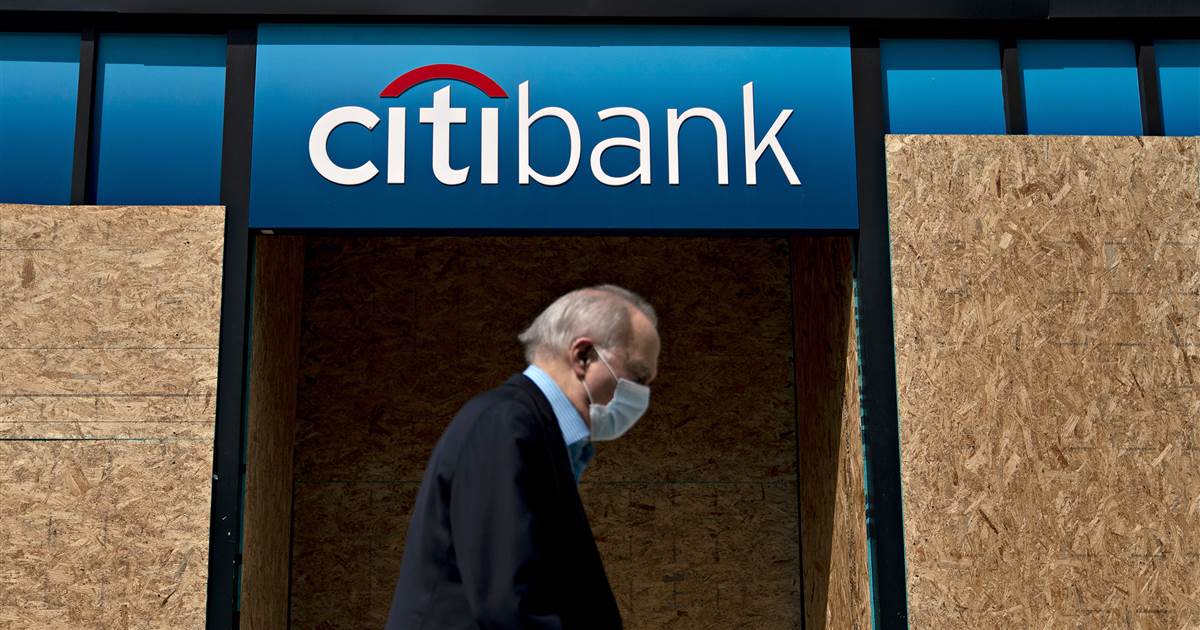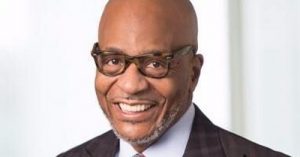Rock-bottom interest rates and preparations for a spike in loan defaults are hitting big banks, which are widely expected to turn in the worst quarterly numbers since the financial crisis this week.
JPMorgan Chase, the nation’s biggest bank in terms of assets, was the first major lender to report its latest earnings early on Tuesday, setting aside $8.9 billion for expected losses but posting better-than-expected income of $4.69 billion.
“Despite some recent positive macroeconomic data and significant, decisive government action, we still face much uncertainty regarding the future path of the economy,” Chase CEO Jamie Dimon said in a statement. “However, we are prepared for all eventualities as our fortress balance sheet allows us to remain a port in the storm.”
Citigroup beat expectations despite a decline in its net income from $4.8 billion to $1.3 billion, and Wells Fargo — which is under various banking restrictions after a fake accounts scandal in 2016 — posted its first quarterly loss since 2008, setting aside $8.4 billion for anticipated defaults.
Goldman Sachs reports on Wednesday, and Bank of America and Morgan Stanley both report on Thursday.
Market observers expect the coronavirus pandemic to inflict huge losses on the sector. The ultra-low interest rate environment driven by the Federal Reserve has kept the financial system solvent, but the flip side is that this intervention effectively takes away a key mechanism for banks to make money.
“One of the key differences, however, between the financial crisis and the current pandemic is there is not an expectation of rising rates now,” said Ryan Giannotto, director of research at GraniteShares. “A flat curve means they just don’t have a lot of options to monetize their asset base.”
Banks also expect to write off a wave of bad debt triggered by mass unemployment and a cash-constrained, nervous consumer base that has lost the appetite — and for the millions who have lost jobs, the ability — to spend at pre-pandemic levels.
“These are sobering times for individuals, small businesses, mid-sized companies and corporations, and as a result, these are sobering times for banks,” said Mike Mayo, Wells Fargo Securities senior industry analyst.
“The banks are much better capitalized today than they were at the financial crisis, yet the severity of the downturn in 2020 leads to a more rapid increase in loan losses,” said Ken Leon, director of equity research at research firm CFRA.
While quarterly earnings might look like those banks reported at the nadir of the financial crisis, the reason today — a global public health crisis — is quite different.
The current rise in COVID-19 cases and prospect of reimposed lockdowns means that even businesses that have survived thus far might ultimately become casualties.
“This is not, at its crux, a financial crisis,” Giannotto said. “It just happened to be so large now that the results have cascaded onto the financial industry. But by and large, the banks have been well positioned prior to this.”
This is largely due to the lessons learned during the financial crisis. Reforms made to the banking system after the financial system’s near-implosion and subsequent bank bailouts are credited now with preventing what could have been an even bigger collapse in bank earnings.
“Their foundation, their balance sheets, their wherewithal is much stronger than before, due to the favorable regulatory intervention of the last decade,” Mayo said.
“The regulatory environment we’ve been in for the past 10 years has caused banks to have significantly better financials overall from a balance sheet perspective,” said Jeremy Bryan, portfolio manager at Gradient Investments.
The big question is what happens next.
“The general expectation of the market is that numbers are going to be bad. The real question for us is, what are they saying about the next few quarters?” Bryan said. “What do things look like going forward? That’s going to be more important than the numbers specifically. It’s more the sentiment about how things are looking for the rest of the year.”
“The government is going to play the key role in this area, and that’s very hard to predict, especially during a political season,” Giannotto said. “A second stimulus round is very likely,” he said, especially if COVID-19 forces more drastic retrenchments of commercial and consumer activity.
The current rise in COVID-19 cases and prospect of reimposed lockdowns means that even businesses that have survived thus far might ultimately become casualties. Already, the pandemic has prompted big retail brand names like Brooks Brothers, J. Crew, Neiman Marcus, and JCPenney to file for bankruptcy, and the pain is expected to spread to other sectors. Meanwhile, the rate of joblessness remains higher than it was even at its Great Recession peak.
“If we see a re-acceleration of the shutdowns, that’s obviously not going to be good for banks,” Bryan said.
“The government’s done a great job of stepping in with unemployment insurance and other safety net measures,” Mayo said. “The government safety net programs make a difference for the individuals involved and helps banks extend the bridge between the pre- and post-COVID economies more easily,” he said.
Maintaining that support over the coming months will be critical — not just for banks, but for ordinary Americans.
“It’s going to be more challenging before it gets better,” Leon said.



















